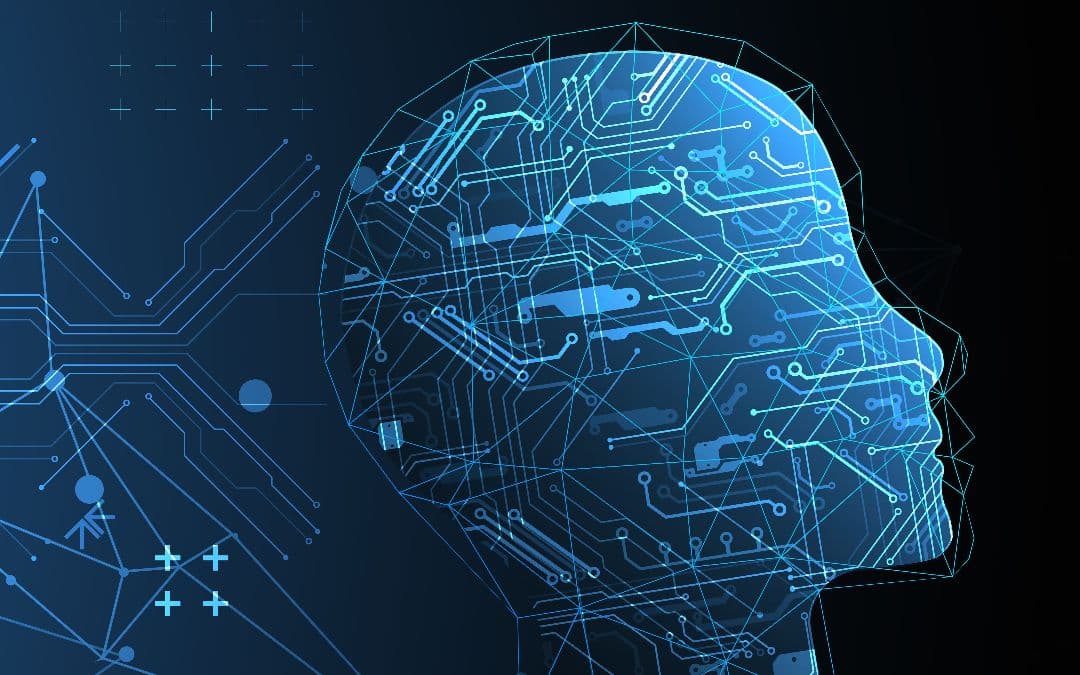Deep Learning vs Machine Learning: What’s the Difference?

BY GEORGIA RYAN
You’ve probably heard the terms “artificial intelligence,” “machine learning,” and “deep learning,” but what do they mean and how do they differ? Artificial intelligence is a wide-ranging term that covers the creation of computer models that mimic human intelligence and abilities, such as decision-making. Machine learning is a subset of artificial intelligence that enables computers to “learn” from data and improve their performance without human intervention. Deep learning is a subset of machine learning that takes this process to the next level by mimicking the structure and function of a human brain. Understanding the strengths of each can help you appreciate their impact on everyday life. Let’s dive in.
What Is Machine Learning?
Machine learning (ML) models are a subset of artificial intelligence (AI). But there is a key difference between AI and machine learning. AI is the broad concept of machines performing tasks that typically require human intelligence whereas ML focuses on finding patterns in data and using those patterns to make decisions or predictions. At its core, ML is a technique that teaches a computer to think for itself—within limits. Think of it as training a helper to handle certain repetitive tasks faster and better than you can.
How Does Machine Learning Work?
Let’s break it down.
Imagine you have some photos of cats and dogs. You start by labeling the images: “This is a cat; this is a dog.” This labeled data becomes your computer’s study material. The machine learning algorithms analyze the labeled data to learn what makes a cat a cat (triangular nose, vertical pupils) and what makes a dog a dog (large ears, squarish nose). Once it sees enough examples, the computer can figure out whether an unlabeled image shows a cat or a dog—without help.!
Why Is Machine Learning Useful?
ML excels at recognizing patterns and uses them to make predictions.
Let’s look at a real-life example:
Have you wondered how Netflix seems to know what shows you’ll enjoy? That’s ML at work.! Netflix uses ML models to analyze your viewing history—what you’ve watched, how long you watched it, and when you stopped. By identifying your behavioral patterns, the algorithm predicts what you’re likely to enjoy next.
ML is the secret sauce behind many everyday technologies. It’s not flashy, but it’s the engine quietly making your life easier.
What Is Deep Learning?
Deep learning is a technique that gives computers superpowers to learn and understand the world in a much deeper, more intuitive way. It’s a specialized subset of machine learning that uses artificial neural networks, which are systems designed to mimic how the human brain works. These networks can handle massive amounts of unstructured data, like photos, videos, and speech, to uncover complicated patterns simpler algorithms miss.
How Does Deep Learning Work?
Think of artificial neural networks as a digital version of your brain, with layers of tiny “neurons” working together. The first layer might learn basic shapes in a photo, like lines or curves. The next layer combines those shapes into more complex patterns, like ears or whiskers. By the time you get to the final layer, the network understands that it’s looking at a cat, and can identify what breed it is, the color of its fur, and possibly its age.
These layers don’t just learn, they refine. Each layer teaches the next layer something more detailed, making the system incredibly powerful for complex tasks.
Why Is Deep Learning Useful?
Deep learning excels at working with data that’s messy and hard to categorize—what’s called unstructured data. Real-world examples include:
- Voice Assistants: When you ask Siri or Alexa to “play relaxing music” or “remind me to buy milk”, these voice assistants rely on deep learning to understand the words, and their context and intent. This is known as natural language processing (NLP). Even if you phrase something oddly, they can figure out what you mean.
- Image Recognition: Social media platforms use deep learning to tag your friends in photos automatically. These models don’t just see faces, they identify features like the shape of someone’s eyes or the curve of a smile to recognize specific people.
- Self-Driving Cars: Autonomous vehicles rely on deep neural networks to process streams of data from cameras, radar, and sensors. These systems recognize traffic signs, pedestrians, and other cars to make split-second decisions about what to do or not do.
Which is Better – Deep Learning or Machine Learning?
There is no right answer. There are too many differences between machine learning and deep learning. For simpler tasks, ML is faster, cheaper, and more efficient. For example, an ML model might be all you need to predict the weather based on past data. But for tasks like recognizing human emotions in photos or enabling self-driving cars to make split-second decisions, deep learning is unmatched.
Final Thoughts
So, what’s the difference between AI and machine learning, and between machine learning and deep learning? Imagine AI as the vast universe, ML as a planet within it, and deep learning as a moon orbiting that planet. Each plays a vital role in making technology smarter and more useful in your everyday life.
AI is the big idea, creating intelligent problem-solving machines. ML is one way to achieve that, teaching machines to find patterns and make predictions. Deep learning, a subset of ML, pushes the boundaries further to handle complex tasks like recognizing faces, understanding speech, or diagnosing medical conditions.
These technologies are already improving your life in ways that feel seamless. Now, the next time you ask your smart home assistant to play your favorite song or watch something Netflix suggests, you’ll know whether it’s ML or deep learning at work.
At AutogenAI, we take full advantage of both machine learning and deep learning models to enhance how you interact with our tools. By analyzing massive amounts of data and spotting patterns, these models help us improve our products and refine your user experience. Whether it’s making writing tasks faster, smarter, or more tailored to your needs, AutogenAI combines the power of these advanced technologies to make your work easier, more efficient, and truly exceptional.
To learn more about AutogenAI, contact us today.


